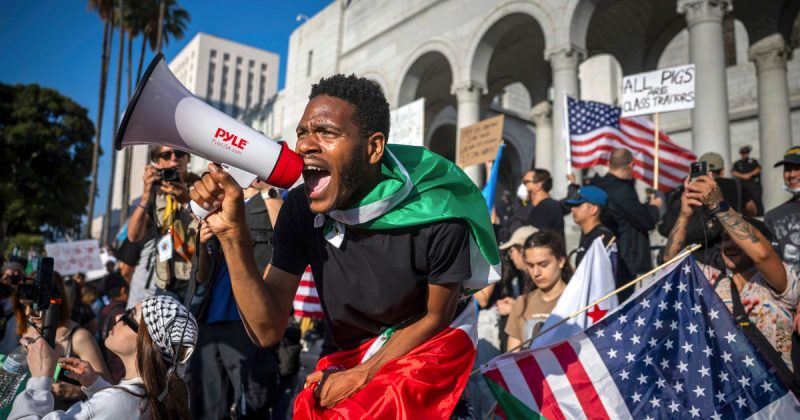
A wave of false and misleading information in Spanish is circulating on social media, twisting the narrative surrounding recent immigration protests in Los Angeles. These posts, often featuring manipulated images and baseless claims, attempt to link the protests to left-wing Latin American governments, echoing similar tactics used during previous events like the 2020 George Floyd protests and 2024 pro-Palestinian student demonstrations.
One particularly egregious example on X boasts over 600,000 views and alleges connections between U.S. immigration protest groups and the “Venezuelan mafia,” the Cuban Communist Party, and Mexico’s Morena party. However, the post lacks concrete evidence or specific group identification, highlighting the deceptive nature of this misinformation campaign.
The protests themselves stemmed from President Donald Trump’s administration’s strict immigration policies, with some instances of violence and property damage adding fuel to the fire. While some far-left groups have indeed encouraged or glorified violence, the surge of Spanish-language misinformation appears strategically designed to portray the protests as a coordinated effort orchestrated by foreign leftist governments, thereby bolstering support for Trump’s policies.
Experts like Evelyn Pérez-Verdía, president of We Are Más, confirm a significant increase in this type of misinformation, noting its shift from more obscure platforms like Telegram and WhatsApp to mainstream social media and online publications. This makes it readily accessible to a wider audience and further amplifies its impact.
The false narrative often resurrects older conspiracy theories, claiming the protests are not spontaneous responses to immigration raids but rather calculated provocations from leftist governments. President Trump himself has fueled these claims on Truth Social, baselessly labeling protesters as “Paid Insurrectionists!”
Elected officials, including Los Angeles Mayor Karen Bass and California Governor Gavin Newsom, haven’t been spared. A fabricated image depicting Bass with Fidel Castro has circulated widely, despite the original picture featuring Castro with Nelson Mandela. While Bass has acknowledged past trips to Cuba and faced criticism for her comments on Castro’s death, the doctored image is a blatant attempt to further associate her with communism.
Pérez-Verdía highlights a key difference between the English and Spanish-language misinformation campaigns: the Spanish-language disinformation focuses heavily on targeting and discrediting elected officials, emphasizing themes of extreme left-wing politics and communism. This targeted messaging underscores a calculated strategy of manipulating narratives based on the specific audience.
This disinformation campaign has even reached the federal government. Conservative and pro-Russian social media accounts have falsely accused Mexican President Claudia Sheinbaum of inciting the protests, a claim she vehemently denies. Homeland Security Secretary Kristi Noem even echoed these accusations during an Oval Office briefing, leading to a public rebuttal from Sheinbaum.
Further complicating matters, videos and photos containing symbols like the hammer and sickle are often taken out of context to paint the protests as a communist movement. Even posts glorifying violence against protesters have surfaced, demonstrating the malicious intent behind this misinformation spread. The prevalence of fake Spanish-language accounts, coupled with the challenges social media platforms face in identifying and removing them, creates a perfect storm for disinformation to flourish.
Experts like Darren Linvill, a professor at Clemson University, point to the increasing use of marketing companies by political organizations to create and spread these fake accounts. He warns that this widespread misinformation significantly erodes trust in expertise, fuels partisanship, and undermines the shared reality needed for effective governance and compromise. The interplay between intentional bad actors and the inherent nature of social media’s echo chambers makes it difficult to definitively determine the exact proportion of blame, but the consequences are undeniable.









